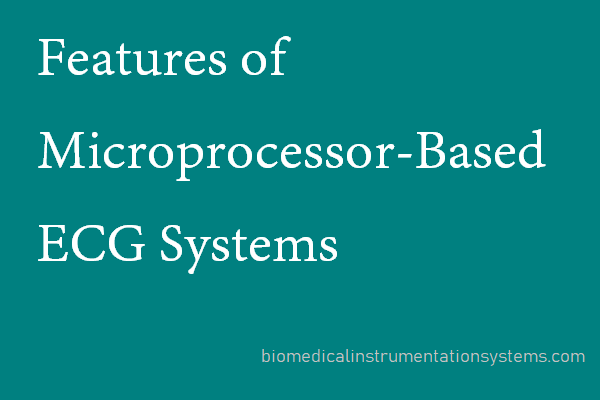Microprocessors have been used in electrocardiographs to obtain certain advanced features like the elimination of artefacts, baseline shifting, and so forth using software techniques. In this article, we look at some of the key features of microprocessor-based ECG systems as follows:
Microprocessor-based ECG machines can perform self-testing each time they are switched on. They are programmed to check lead continuity and polarity; additionally they can indicate lead fall-off or reversal. The use of digital filters considerably enhances the signal quality during recording and problems like baseline drift and excessive mains hum are thus automatically corrected. Minimizing baseline drift without distorting the signal helps in monitoring ECG of exercising or ambulatory subjects.

The frequency components of ECG signals are low enough for the microprocessor to perform reliable data acquisition, processing and display.
Using microprocessors, the need for the technician to switch from one lead to another during recording process is done away with. Microprocessors have also being employed in simultaneous acquisition of multiple leads.
Stored programs in the ROM direct the operator about the entering of subject data and display error codes.
Automatic centering of the tracing can also be achieved with microprocessor-based ECG machines.
Find out more about: Fingertip Pulse Oximeter Blood Oxygen Saturation Monitor
Lastly, microprocessor-based ECG systems offer the potential for reducing the complexity of analysis algorithms by pre-processing the data.
Related articles:
- The Applications of Microcontrollers in Medical Instrumentation
- The application of Microprocessors in Medical Instrumentation
- Key Features of Modern ECG Systems
- The Instrumentation for Recording ECG Signals
- ECG Electrodes
- Principle Parts and Types of ECG Recorders

Leave a Reply
You must be logged in to post a comment.